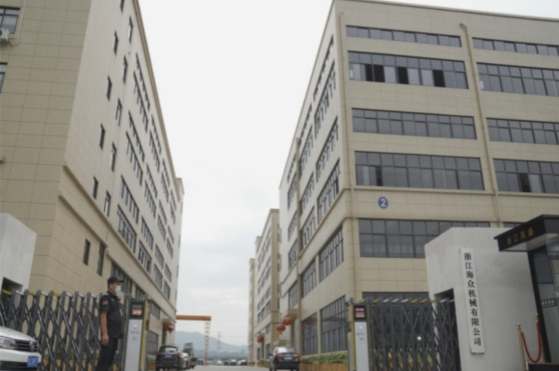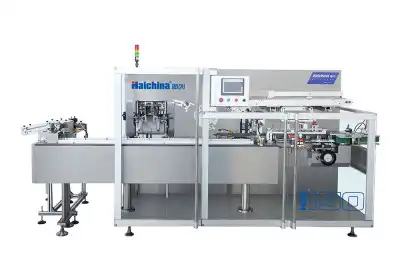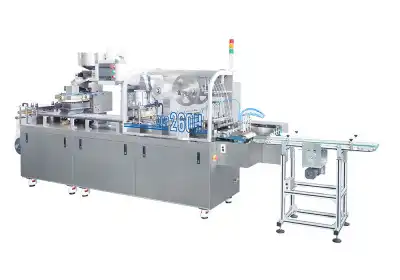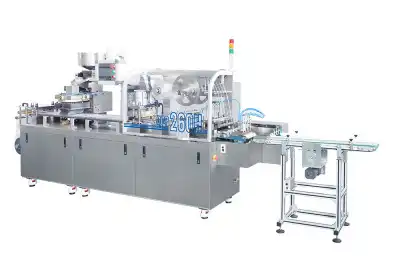The Evolution and Importance of Strip Packaging in Pharmaceuticals
Historical Development of Pharmaceutical Packaging
The pharmaceutical industry has come a long way in terms of packaging solutions. In the early days, medications were often dispensed in bulk containers or simple paper envelopes, which offered limited protection and made it difficult for patients to manage their dosages. As the industry progressed, the need for more sophisticated packaging became evident. This led to the development of various packaging methods, including bottles, vials, and eventually, strip packaging.
Advantages of Strip Packaging over Traditional Methods
Strip packaging, facilitated by advanced blister packaging machinery, offers several advantages over traditional packaging methods. One of the primary benefits is improved product protection. The individual cavities in blister packs shield each dose from external factors such as moisture, light, and air, thereby preserving the medication's efficacy and extending its shelf life. Additionally, strip packaging enhances patient compliance by providing clearly marked doses, making it easier for patients to follow their prescribed regimen.
Impact on Patient Safety and Medication Adherence
The adoption of strip packaging has significantly impacted patient safety and medication adherence. The tamper-evident nature of blister packs ensures that patients can easily identify if their medication has been compromised. Moreover, the clear organization of doses in strip packaging helps patients keep track of their medication intake, reducing the risk of missed doses or accidental overdoses. This improved adherence to medication schedules can lead to better health outcomes and reduced healthcare costs.
The Technology Behind Strip Packaging: Blister Machine Packing
Components of Blister Packaging Equipment
Modern blister packaging equipment is a marvel of engineering, designed to efficiently produce high-quality strip packages. These machines typically consist of several key components, including a forming station, a filling station, and a sealing station. The forming station creates the cavities or blisters in the plastic or aluminum sheet, while the filling station accurately places the medication into these cavities. Finally, the sealing station applies the backing material, creating a secure seal around each blister.

The Blister Packaging Process
The blister packaging process begins with the selection of appropriate materials for the package. The forming material, usually a plastic film or aluminum foil, is fed into the blister machine packing system. The material is then heated and molded to create the blisters or cavities. Next, the medication is precisely placed into these cavities, often using automated systems to ensure accuracy. The filled blisters are then sealed with the backing material, which is typically aluminum foil or a paper-foil laminate. This sealing process is critical, as it must create an airtight and tamper-evident seal to protect the medication.

Advancements in Blister Packaging Machinery
The field of blister packaging machinery is constantly evolving, with manufacturers like Zhejiang Haizhong Machinery Co., Ltd. at the forefront of innovation. Recent advancements include improved automation systems that enhance production speed and accuracy, as well as more flexible machines capable of handling a wider range of packaging formats. Additionally, there have been significant improvements in the materials used for strip packaging, resulting in more sustainable and environmentally friendly options. These advancements not only improve the efficiency of pharmaceutical packaging but also contribute to the overall quality and safety of medications.

Applications and Future Trends in Pharmaceutical Strip Packaging
Diverse Applications in the Pharmaceutical Sector
Strip packaging has found widespread application across various segments of the pharmaceutical industry. It is particularly popular for over-the-counter medications, prescription drugs, and clinical trial supplies. The versatility of blister packaging equipment allows for the packaging of various dosage forms, including tablets, capsules, and even liquids or gels in specialized blister designs. This flexibility makes strip packaging an ideal solution for a wide range of pharmaceutical products, from common painkillers to specialized medications.
Emerging Trends in Strip Packaging Technology
The pharmaceutical packaging industry is witnessing several emerging trends that are shaping the future of strip packaging. One significant trend is the integration of smart packaging technologies. These innovations include the incorporation of RFID tags or QR codes on blister packs, enabling better tracking and authentication of medications. Another trend is the development of child-resistant yet senior-friendly packaging designs, addressing the dual needs of safety and accessibility. Additionally, there is a growing focus on sustainable packaging solutions, with manufacturers exploring biodegradable materials and more eco-friendly production processes for high speed blister packing machine and blister packaging machinery.
The Role of Strip Packaging in Personalized Medicine
As the field of personalized medicine continues to grow, strip packaging is poised to play a crucial role. The flexibility of blister packaging equipment allows for the creation of customized medication packs tailored to individual patient needs. This could include combination packs containing multiple medications in a single blister card, organized by dosing schedule. Such personalized packaging solutions have the potential to significantly improve patient adherence and treatment outcomes, particularly for individuals managing complex medication regimens.
Conclusion
Strip packaging has revolutionized the pharmaceutical industry, offering a secure, convenient, and patient-friendly solution for medication packaging. The continuous advancements in blister packaging equipment and machinery have further enhanced the efficiency and versatility of this packaging method. As the pharmaceutical landscape evolves, with trends like personalized medicine and smart packaging gaining traction, the importance of strip packaging is set to grow. By embracing these innovations and staying at the forefront of packaging technology, pharmaceutical companies can ensure better product protection, improved patient compliance, and ultimately, enhanced healthcare outcomes.
Contact Us
To learn more about our innovative blister packaging equipment and how it can benefit your pharmaceutical packaging needs, please contact us at [email protected]. Our team of experts is ready to help you find the perfect packaging solution for your products.





